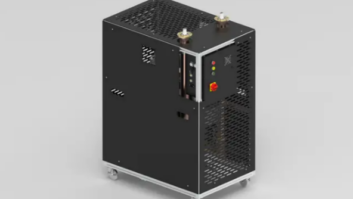Applied Technology: Dielectric HDR Plus
Apr 1, 2005 12:00 PM, By Henry Downs
The dawn of in-band on-channel terrestrial radio has arrived. For the last 12 years or so, manufacturers have been working behind the scenes to develop components to make it a reality. The most daunting task by far has been how to combine the analog and digital signals in a cost-effective manner. The proof of concept work used a 10dB coupler as the combiner. This approach causes more than 16 percent of the generated RF signal power to be dumped into a load. Many different improvements have been suggested, all of which have slightly reduced the loss factor but no all-encompassing solution has been brought to fruition.

Much of the Dielectric Communications research has centered on combining the analog and digital signals in the antenna, one of the results being the introduction of the HDR Plus antenna. This device allows loss-less combination of the existing analog and IBOC digital sideband signals without the need for additional tower space. The array is made up of two completely separate interleaved antennas, which meet the FCC specified coverage requirements. An additional feature of this array is that the digital portion may be used as an auxiliary for the analog in an emergency situation.
The most prominent challenge in developing this type of antenna has been how to obtain sufficient isolation between the transmitters. This is primarily due to the fact that the radiated analog signal power level is 100 times higher than the digital. With insufficient isolation the new digital transmitter could be damaged or could possibly generate unwanted spurious signals in band. Initial investigation into this type of interleaved array used two identical antennas such that they both exhibited right-hand circular polarization (RHCP). The resulting isolation was found to be grossly inadequate at about 13dB.
This led to the development of the Reverse Polarized Interleaved Antenna (patent pending) in which the digital antenna operated using left-hand circular polarization while the analog antenna continued to radiate RHCP. The use of the two directions of polarization increased the isolation to about 24dB. The addition of a ferrite isolator in the lower power digital input line allowed this device to be successfully implemented at WNNK in Harrisburg, PA.
Work in reverse
The HDR Plus research team built on the reverse polarization technique using different antenna bays with the result that the isolation between the transmitters has been increased to 42dB minimum.

Comparison of isolation between antennas with different types of polarization between the two systems.
This increase in isolation, which helps lessen implementation costs, also removes the need for an isolator, which has been considered a potential weak link in the system.
A significant amount of testing has been carried out with respect to the obtainable patterns from this type of interleaved array and by appropriately offsetting the two arrays with respect to the tower the azimuth coverage from each antenna is, in effect, the same.
The main advantages of the HDR Plus antenna are threefold. It does not require any additional aperture on the tower. Because there are no losses incurred due to the method of analog and digital signal combination a low power digital transmitter may be implemented. This low digital power requirement means that a type N cable is sufficient to carry the signal from the transmitter to the antenna. Once a tower loading study demonstrates the feasibility of the additional antenna bays and the necessary permits are obtained, the system may be installed and brought to fruition. The HDR plus antenna meets or exceeds all of the pertinent FCC regulations with respect to coverage contours.
Downs is technical director, Dielectric Communications, Raymond, ME.










